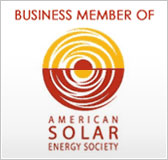
Summer Heat Wave Draws Attention to Solar EnergyClick
here to see our selection of Solar Power Products.
Pacific SolarTech - Visit us at Solar Power 2006 Booth#205 Development of solar energy has important implications for agriculture and rural America. Farms and ranches are going to be bigger users of solar energy in the future, and solar farms or large-scale solar generating stations could dot the rural landscape, at least in the West and Southwest. Farmers rely both on electricity and natural gas in the production, processing and storage of commodities so they get a double-whammy when these prices rise. In California, Farm Bureau members participated in a voluntary state-wide program to reduce energy consumption any time a power emergency was declared. Conservation and efficiency help, but the blazing sun itself is a potential remedy for rolling blackouts and rising energy prices. According to the PopSci 2025, a strategy prepared by Popular Science magazine with the help of dozens of scientists and energy experts, solar power can supply 10 percent of the nation's electricity needs by 2025. Wind, solar and biomass together produce only 3 percent of electricity today so that would be a big jump, and beyond 2025 it is envisioned that solar could grab an even greater share of the market. Development of solar energy has important implications for agriculture and rural America. Farms and ranches are going to be bigger users of solar energy in the future, and solar farms or large-scale solar generating stations could dot the rural landscape, at least in the West and Southwest. Not only are farms and ranches going to use more solar energy,
but they are going to use it for bigger jobs. P-R Farms in the San
Joaquin Valley of California installed nearly 8,000 solar panels
on the roof of a large packinghouse to provide it with electricity.
The tree fruit and almond operation is owned by Pat Ricchiuti, president
of the Fresno County Farm Bureau. Fetzer Vineyards is installing
a solar system at its Mendocino County wine bottling facility and
barrel room. Solar energy is generally equated with photovoltaic technology which uses solar cells and panels to convert sunlight directly to electricity, but there are other technologies that are more efficient and capable of power plant size projects. Concentrating solar power technology produces high temperature heat which is converted into electricity. A 500-megawatt solar generating station planned by Southern California Edison for the desert northeast of Los Angeles will use large mirrored dishes arrayed over thousands of acres to reflect enough sunlight to serve almost 300,000 customers. An Australian company is planning to build a giant solar tower in the outback of Australia. The tower will look like a tall chimney surrounded by a vast, open-sided greenhouse or solar collector. Hot air under the canopy is drawn up the tower and the rushing wind causes turbines to spin and generate electricity. Solar power is another clean, renewable energy that has applications for agriculture and could bring jobs and development to rural America. About the author...  |







